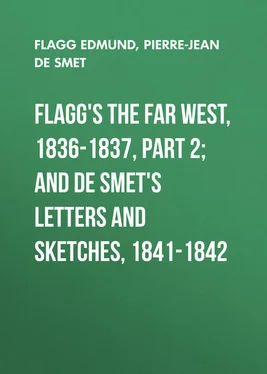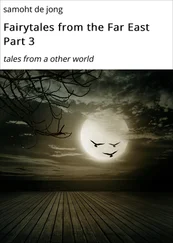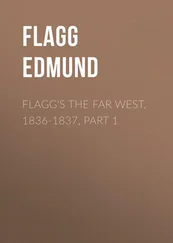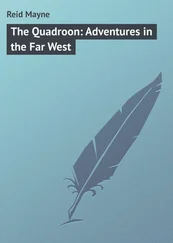Edmund Flagg - Flagg's The Far West, 1836-1837, part 2; and De Smet's Letters and Sketches, 1841-1842
Здесь есть возможность читать онлайн «Edmund Flagg - Flagg's The Far West, 1836-1837, part 2; and De Smet's Letters and Sketches, 1841-1842» — ознакомительный отрывок электронной книги совершенно бесплатно, а после прочтения отрывка купить полную версию. В некоторых случаях можно слушать аудио, скачать через торрент в формате fb2 и присутствует краткое содержание. Издательство: Иностранный паблик, Жанр: foreign_antique, foreign_prose, на английском языке. Описание произведения, (предисловие) а так же отзывы посетителей доступны на портале библиотеки ЛибКат.
- Название:Flagg's The Far West, 1836-1837, part 2; and De Smet's Letters and Sketches, 1841-1842
- Автор:
- Издательство:Иностранный паблик
- Жанр:
- Год:неизвестен
- ISBN:нет данных
- Рейтинг книги:4 / 5. Голосов: 1
-
Избранное:Добавить в избранное
- Отзывы:
-
Ваша оценка:
- 80
- 1
- 2
- 3
- 4
- 5
Flagg's The Far West, 1836-1837, part 2; and De Smet's Letters and Sketches, 1841-1842: краткое содержание, описание и аннотация
Предлагаем к чтению аннотацию, описание, краткое содержание или предисловие (зависит от того, что написал сам автор книги «Flagg's The Far West, 1836-1837, part 2; and De Smet's Letters and Sketches, 1841-1842»). Если вы не нашли необходимую информацию о книге — напишите в комментариях, мы постараемся отыскать её.
Flagg's The Far West, 1836-1837, part 2; and De Smet's Letters and Sketches, 1841-1842 — читать онлайн ознакомительный отрывок
Ниже представлен текст книги, разбитый по страницам. Система сохранения места последней прочитанной страницы, позволяет с удобством читать онлайн бесплатно книгу «Flagg's The Far West, 1836-1837, part 2; and De Smet's Letters and Sketches, 1841-1842», без необходимости каждый раз заново искать на чём Вы остановились. Поставьте закладку, и сможете в любой момент перейти на страницу, на которой закончили чтение.
Интервал:
Закладка:
How wonderful are the phenomena betrayed in the geological structure of our earth! And scarcely less so are the ignorance and the indifference respecting them manifested by most of our race. "It is marvellous," says the celebrated Buckland, 74"that mankind should have gone on for so many centuries in ignorance of the fact, which is now so fully demonstrated, that so small a part of the present surface of the earth is derived from the remains of animals that constituted the population of ancient seas. Many extensive plains and massive mountains form, as it were, the great charnel-houses of preceding generations, in which the petrified exuviæ of extinct races of animals and vegetables are piled into stupendous monuments of the operations of life and death during almost immeasurable periods of past time." "At the sight of a spectacle," says Cuvier, 75"so imposing, so terrible as that of the wreck of animal life, forming almost the entire soil on which we tread, it is difficult to restrain the imagination from hazarding some conjectures as to the cause by which such great effects have been produced." The deeper we descend into the strata of the earth, the higher do we ascend into the archæological history of past ages of creation. We find successive stages marked by varying forms of animal and vegetable life, and these generally differ more and more widely from existing species as we go farther downward into the receptacle of the wreck of more ancient creations.
That centuries have elapsed since that war of elements by which the great lake of the Mississippi was drained of its waters, the aged forests rearing themselves from its ancient bed, and the venerable monuments resting upon the surface, satisfactorily demonstrate. Remains, also, of a huge animal of graminivorous habits, but differing from the mastodon, have, within a few years, been disinterred from the soil. The theory of the Baron Cuvier, that our earth is but the wreck of other worlds, meets with ample confirmation in the geological character of the Western Valley.
As to agricultural productions, besides those of the more ordinary species, the soil of the American Bottom, in its southern sections, seems eminently adapted to the cultivation of cotton, hemp, and tobacco, not to mention the castor-bean and the Carolina potato. The tobacco-plant, one of the most sensitively delicate members of the vegetable family, has been cultivated with more than ordinary success; and a quantity inspected at New-Orleans a few years since was pronounced superior to any ever offered at that market.
As I journeyed leisurely onward over this celebrated tract, extensive and beautiful farms spread out themselves around me, waving in all the gorgeous garniture of early autumn. The prairie was carpeted with the luxuriant richness of the golden rod , and all the gaudy varieties of the heliotrope and asters , and the crimson-dyed leaves of the dwarf-sumach; while here and there upon the extended plain stood out in loneliness, like a landmark of centuries, one of those mysterious tombs of a departed race of which I have already said so much. Some of them were to be seen rearing up their summits from the hearts of extensive maize-fields, crowned with an exuberance of vegetation; and upon one of larger magnitude stood a white farmhouse, visible in the distance for miles down the prairie. The number of these ancient mounds upon the American Bottom is estimated at three hundred ; far more than are to be found upon any other tract of equal extent.
At the old French village of Prairie du Pont , 76situated upon a creek of the same name, I made the necessary tarry for some refreshment, upon which breakfast or dinner might have laid nearly equal claim to bestow a name. The most striking circumstance which came under my observation during my delay at this place was a very novel mode of producing the metamorphosis of cream into butter pursued by these villagers; a manœuvre executed by beating the cream with a spoon in a shallow basin. This operation I beheld carried on by the dark-browed landlord, much to my ignorance and wonder, with not an idea of its nature, until the substance produced was placed upon the board before me, and called butter . Prairie du Pont is one of the dampest, filthiest, most disagreeably ruinous of all the old villages I have ever visited. A few miles to the north is situated Cahokia, 77one of the earliest settlements in the state, and the ancient residence of the Caoquias, one of the tribes of the Illini Indians. The place is supposed to have been settled by the followers of La Salle during his second expedition to the West in 1683, on his return from the mouth of the Mississippi. More than a century and a half has since elapsed; and the river, which then washed the foot of the village, is now more than a mile distant. This removal commenced, we are told, shortly after the first settlement, and well exemplifies the arbitrary character of the Western waters. Formerly, also, a considerable creek, which yet retains the name of the village, passed through its midst, discharging itself into the Mississippi not far below. The outlet is now several miles higher up; and tradition attributes the change to the pique of an irritated villager, who, out of sheer spite to the old place and its inhabitants, cut a channel from the creek to the river, and turned the waters from their ancient course.
As French immigration at Cahokia increased, the Indian tribe receded, until the last remnant has long since disappeared. Yet it is a singular fact in the history of this settlement, that, notwithstanding the savages were forced to abandon a spot endeared to them by protracted residence and the abundance of game in the neighbouring prairies and lakes, they have ever regarded their successors with feelings of unchanging friendliness. How different, under the same circumstances, was the fate of the settlements of Plymouth and Jamestown; and even here, no sooner did the American race appear among the French, than hostilities commenced.
For many years Cahokia, like old Kaskaskia, was the gathering-spot of a nomadic race of trappers, hunters, miners, voyageurs, engagés, couriers du bois , and adventurers, carrying on an extensive and valuable fur-trade with the Indian tribes of the Upper Mississippi. This traffic has long since been transferred to St. Louis, and the village seems now remarkable for nothing but the venerableness of age and decay. All the peculiarities of these old settlements, however, are here to be seen in perfection. The broad-roofed, whitewashed, and galleried cottage; the picketed enclosure; the kitchen garden; the peculiar costumes, customs, poverty, ignorance, and indolence of the race, are here met, precisely as has more than once already been described in these volumes. Here, too, is the gray old Catholic church, in which service is still regularly performed by the officiating priest. Connected with it is now a nunnery and a seminary of education for young ladies. The villagers still retain their ancient activity of heel and suppleness of elbow; and not a week is suffered to pass without a merry-making and a dance. The old "common field" is still under cultivation; and, uncurtailed of its fair proportions, stretches away up the bottom to the village opposite St. Louis. This valuable tract, held in common by the villagers of Cahokia and Prairie du Pont, has been confirmed to them by act of Congress; and, so long since as fifty years, four hundred acres adjoining the former village were, by special act, granted to each family. 78The number of families is now, as has been the case this century past, about fifty, neither diminishing nor increasing. Very few of the inhabitants are of American origin, and these are liable to annual attacks of fever, owing to the damp site of the place and the noxious effluvia of the numerous marshes in the vicinity. Upon the French villagers these causes of disease exert no effect, favourable or unfavourable. A few acres of corn; a log cabin; a few swarthy responsibilities, and a few cattle; a cracked fiddle, and a few cartloads of prairie-grass-hay in autumn, seems the very ultimatum of his heart to covet or his industry to obtain.
Читать дальшеИнтервал:
Закладка:
Похожие книги на «Flagg's The Far West, 1836-1837, part 2; and De Smet's Letters and Sketches, 1841-1842»
Представляем Вашему вниманию похожие книги на «Flagg's The Far West, 1836-1837, part 2; and De Smet's Letters and Sketches, 1841-1842» списком для выбора. Мы отобрали схожую по названию и смыслу литературу в надежде предоставить читателям больше вариантов отыскать новые, интересные, ещё непрочитанные произведения.
Обсуждение, отзывы о книге «Flagg's The Far West, 1836-1837, part 2; and De Smet's Letters and Sketches, 1841-1842» и просто собственные мнения читателей. Оставьте ваши комментарии, напишите, что Вы думаете о произведении, его смысле или главных героях. Укажите что конкретно понравилось, а что нет, и почему Вы так считаете.












